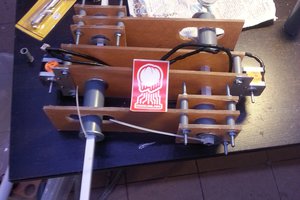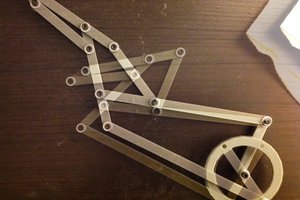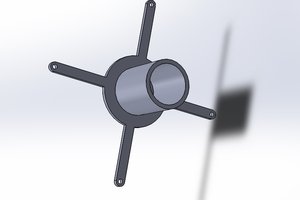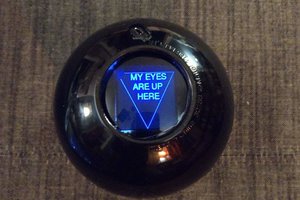back ground
yeah so there's this robot I've wanted to make for most of my life and while I can't work on it as a whole right now I decided to work on what I can. one of those being the idea that I would like my bot to be able to change colors (nothing amazing just changing from soothing visible to something more stealthy) . so after a lot of research I found the best option for what I would like to do would be integrated electrostatic display so I'd make that!
and then I woke up and realized that there was little change of me pulling that off with the tools I have at hand and even if I could it would be to delicate to last long in the real world. lol
thermochromic inks seemed to be my best bet not perfect but still fun.
this still had the problem of surface damage meaning replacing whole parts of the bot but a trip through deviant art brought me a good answer. A picture od a robotic panther with active camo mot in the armor but on a easy to replace fabric cover.
my mind instantly when to super fabric. its carbide reinforced epoxy tiles would make for an for a good base to a dot matrix display. the end product would be light and durable protecting cover that could easily be replaced once damaged.
and so this quest to see if I can really make it.
---------------------------------------------------------------------------------
test cell 1 is 1 inch by an inch and a quarter and over a mm thick. its made of 5 minute epoxy combined with the thermochromic pigment and fine silicon carbide grit for abrasion resistance. for the end project I'm hoping to use a conductive epoxy layer as the heating element but I'm having trouble getting that to work. so for this test I use some thin nichrome wire I salvaged from an old hair dryer.
room temp .
test cell heated by the imbedded nichrome wire power by two AA batteries.
test cell 1 video



 Alain Sanguinetti
Alain Sanguinetti
 Sarah Petkus
Sarah Petkus
 M.daSilva
M.daSilva
 Ronald McCollam
Ronald McCollam
Really cool, tho wouldn't this cost lots of power? (not sure tbh, but i would assume so, if your using electricity to create heat)
Either way, keep it up, would love to see any next iteration you can come up with :)